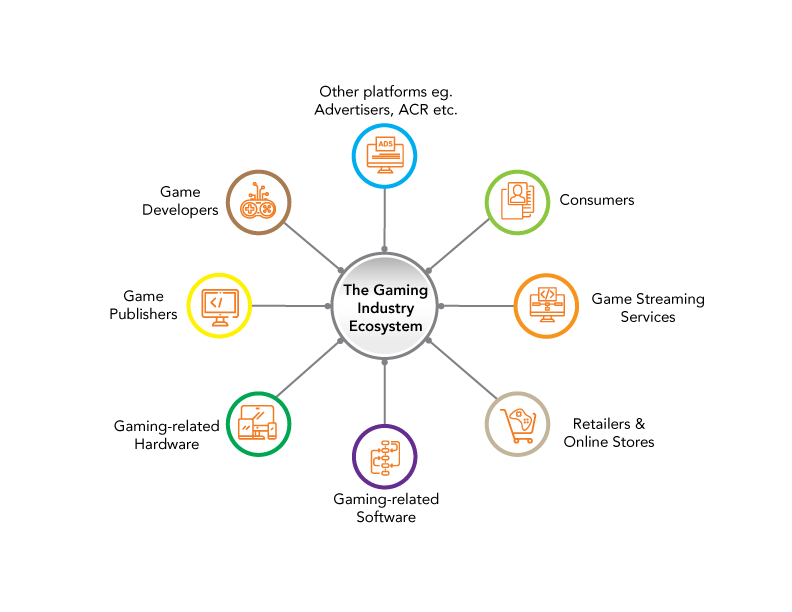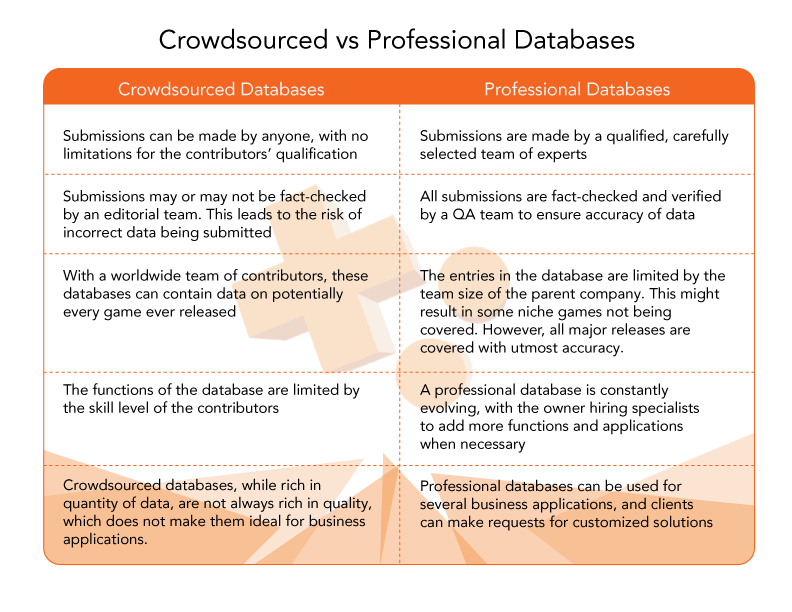Why Large Firms In The Video Gaming Ecosystem Rely On Niche Partners Like Gameopedia
The Current Demand For Video Games
The COVID-19 pandemic has forced a lot of people to stay indoors. One pastime that has seen a spike in interest as a result of this forced isolation is video gaming. This sudden increase in the demand for video games has been a huge boon for the Video Game industry. The number of gamers have increased on all platforms, be it mobile, console, or PC. Video game publishers and stores have also reported rapid growth during this period. Even better, this growth has been observed across all sectors of gaming, ranging from the big AAA market to the niche Indie/AA market.
This growth has led to increased collaboration between large companies and smaller firms to tackle the rapidly changing trends in the video game ecosystem.

Traditionally, large companies find it a challenge to be agile when it comes to decision-making. Their policies are controlled by a huge leadership team, which in turn is influenced by the interests of the company’s investors and shareholders. As a result, bigger companies turn to outsourcing to adapt to changing trends. They partner with smaller, boutique firms that can provide them with various services at a fraction of what it would have cost to set up the same in-house. These smaller firms are focused on a very specific niche in the industry, such as Game Teardowns or Sentiment Analysis of game reviews. This sharp focus allows them to become subject matter experts faster than most large firms. This is just as true in the gaming ecosystem.
Benefits Of Working With Niche Gaming Partners
Let’s see why using niche firms is a more attractive proposition as compared to setting up a new business unit in-house:
- Focus – A niche market offering is all about solving those crucial time-consuming and error-prone problems faced by businesses. Niche players do not cast their net wide but are very specific about whom they serve and how they do it. This focus helps bigger companies as they get to take advantage of an expert team’s services without a huge upfront investment.
- Scale – Large firms are often skeptical about collaborating with other larger players. Niche firms are a safe bet, as they are more focused on developing their expertise, and the smaller scale at which they operate negates the risk of competition, thus making them an ideal partner for larger firms to collaborate with.
- Speed – Niche firms in general do not deal with a lot of bureaucracy and red tape. They operate with much leaner and faster processes, which enables them to constantly adapt to their clients’ needs. This in turn makes it possible to deliver results faster. This speed can rarely be found when collaborating with a larger firm.
- Customizability – Expanding on the previous point, given that niche firms are more flexible with their processes, they are also able to offer more customized solutions without compromising on speed. Their clients are also comfortable discussing more customizable options, as they know that the dedicated team of experts will do their very best to meet the requirements. This is not to say that a larger firm would not be able to offer the same, but it would likely take much longer to get back with a similar offering, not to mention at a significantly higher cost.
- Pricing – Speaking of costs, hiring niche firms remains profitable for most large companies, as the former have a small employee base. Every person hired in these firms is chosen after careful consideration and this reflects in the very reasonable pricing structure offered to clients. In these uncertain times, these firms place great emphasis on building relationships, so they are unlikely to increase their rates overnight. This makes them an economical choice to work with.
- Dedication – While every service firm does its best to treat its clients with equal priority, the fact remains that the larger the firm, the more likely it is that the client will be given only as much response as contractually obligated. Smaller firms realize the need to treat their clients with utmost priority and can focus on delivering the very best customer experience.
Services that Niche Gaming Firms Can Offer to the Video Game Industry
- Video Game Metadata – Metadata provides essential information about a game such as its developer and publisher, release date, age ratings, and so on, including custom game data as well if necessary. This data is essential to maintain several kinds of game databases and plays an important role in data analysis as well.
- Game Teardowns – Looking into what makes a game successful can help other developers and publishers understand what makes a game tick. A game teardown offers a vast and comprehensive breakdown of what a game consists of and how all of its moving parts work. This work is best done by experts in the gaming ecosystem who do similar work on hundreds, if not thousands of games each year.
- Game Insights – Part of the process of making a game involves understanding how the market is reacting to certain elements in a game. A proper analysis of multiple games which have already been released in the market can provide these insights, and not every developer can or will want to do this analysis in-house.
- Sentiment Analysis – Another service that niche firms in the gaming ecosystem are best suited to offer is sentiment analysis. This involves analyzing the conversations and general sentiment about a game after its release. A game may garner varying opinions from critics and the public. As it is these reviews that influence sales in the long term, understanding these sentiments is important for developers of upcoming games.
- Game Content For Reference Fingerprints – Automatic Content Recognition helps identify the game being played on a screen, be it a Smart TV or a Smart Device connected to a TV. ACR data is used by several players in the market, and for the recognition to be made possible, Reference Fingerprints of the game being played are required to match against the sample collected from the consumer.
- Video Game Media – Some companies – especially stores – require specialized video game media to use on their portals. This includes custom box art, descriptions, short clips, and so on.
- Customized Services – There are services which are unique to the company looking for them. These services may not have been defined by the industry yet. Resolving them requires a team of experts from the gaming ecosystem who are well-versed with the multitude of games coming into the market each year and can provide custom game data and solutions.
While the gaming industry has been fortunate to come out strong during the pandemic, the world economy continues to remain uncertain. It is also riskier for large firms to take new initiatives in these unpredictable times. In such a period, it is beneficial for large firms to entrust niche companies in the gaming ecosystem to help them adapt to the changing trends, instead of trying to develop new in-house capabilities from scratch.
Gameopedia is one such provider of niche solutions in the gaming industry amidst the video game ecosystem. For more than a decade, we have been building our expertise in providing game metadata, recommendations, and insights, which makes us the top choice for meeting these niche services. We offer a wide range of solutions in the gaming ecosystem that cater to various companies. Interested in what we have to offer? Reach out to us to learn more about our service offerings.











